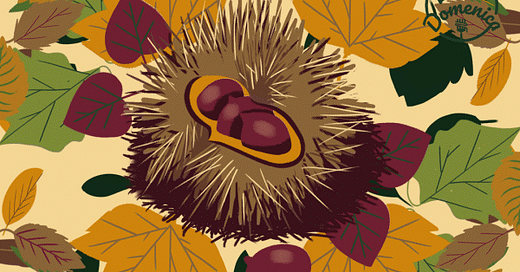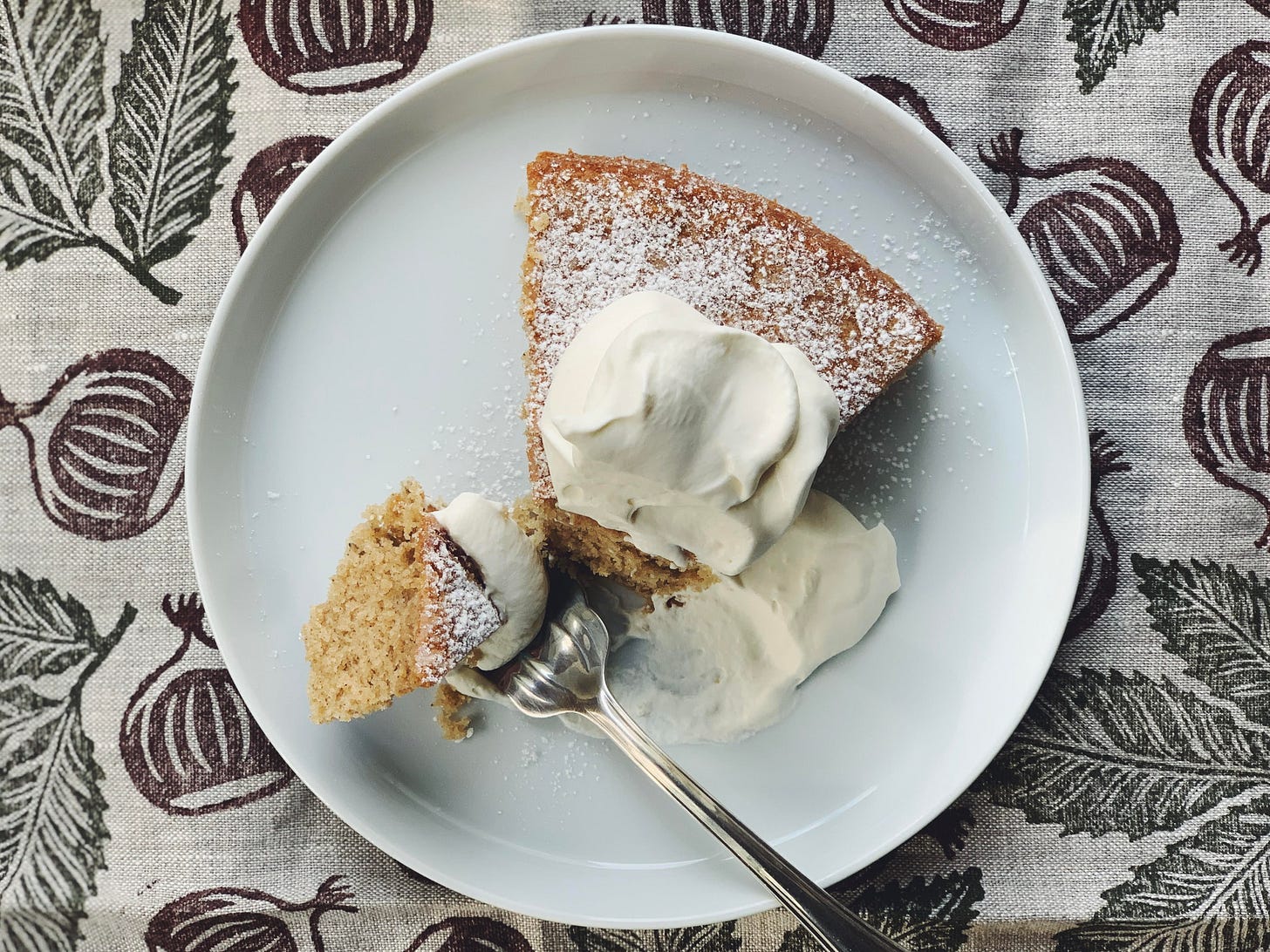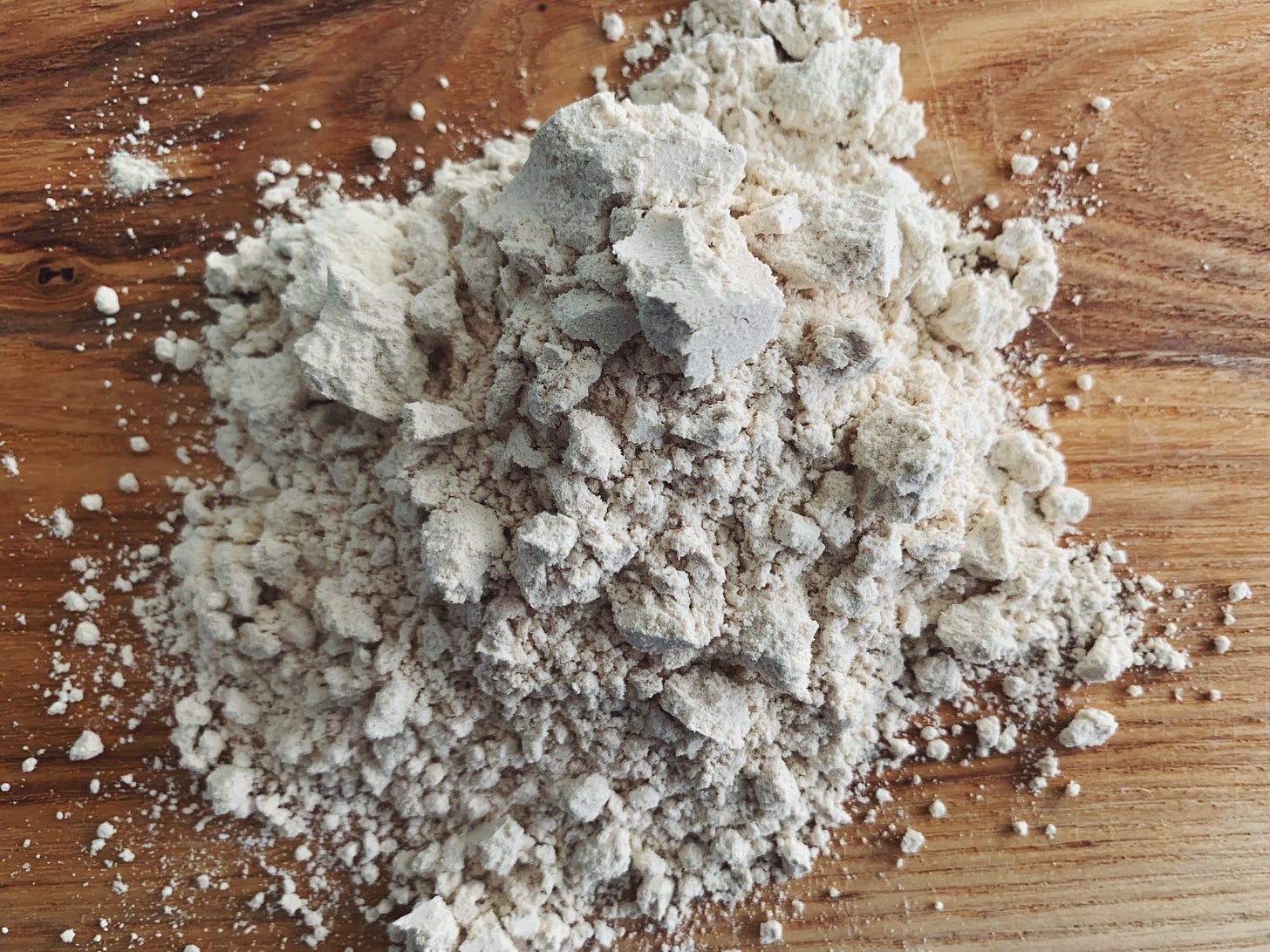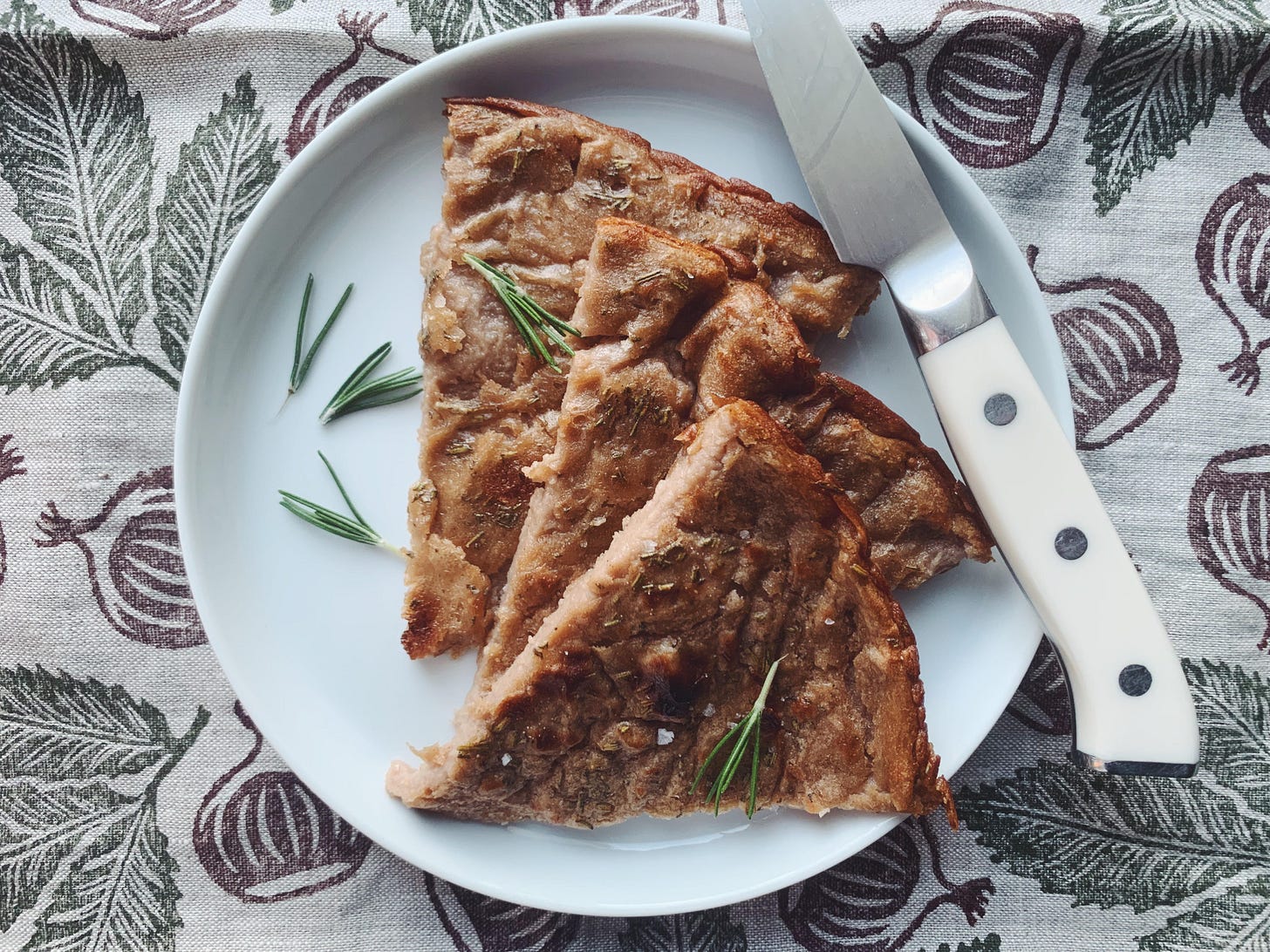
Benvenuti! Welcome to Buona Domenica, a weekly newsletter of inspired Italian home cooking. I’m a journalist, cooking instructor, occasional tour guide, and the author of eight cookbooks on Italian cuisine.
This week’s newsletter features four recipes with chestnut flour: Gnocchi di Castagne (chestnut gnocchi), and Castagnole (Chestnut and Apple Fritters), for all subscribers; and two new recipes for paid subscribers: Farinata di Castagne e Ceci, a chestnut and chickpea flour “pancake” of sorts, and Torta di Castagne, a lovely fall snacking cake.
To catch up on past newsletters, visit the Buona Domenica Archive; if you’re still looking for Thanksgiving inspiration, you’ll find plenty here. For a complete list of all recipes published in this newsletter (124 and counting), check out the new Index of Recipes.
I’ll be taking a short break for the Thanksgiving holiday, so the next newsletter will go out on Sunday, Dec. 3. Wishing a Happy Thanksgiving to those who celebrate.
If you were to rifle through my handbag, you might think a squirrel had taken up residence inside one of its pockets. In addition to the usual paraphernalia—wallet, keys, sunglasses, assorted business cards, and Saila mints—it always holds a chestnut or two, sometimes more.
The dark, polished gloss of a chestnut, the smooth shell and swollen little belly, the way it fits so easily in the hand, has always appealed to me, so that when I see one on the ground, I almost always have to pick it up. It’s like a worry bead, or a talisman. Eventually, it ends up in the bag, where it remains for months, years.
My earliest memories of chestnuts are not associated with Italy, but rather New York City. When we were little, our parents would take my sister and me to see the Christmas tree at Rockefeller Center. Vendors sold roasted chestnuts on just about every corner (though a google search tells me their numbers have dwindled). I loved the smoky, acrid perfume that wafted from their carts into the cold air, and the sweet, starchy nuts that scalded your tongue, then crumbled softly when you bit into them.
At home, my mother occasionally bought jars of crema di marroni, obscenely sweet chestnut jam, which we spread thickly on toast. It’s still one of my favorite indulgences, along with marrons glacés (candied chestnuts). For these reasons, I’ve always associated chestnuts with treats and special occasions. It wasn’t until years later that I learned that, for generations of Italians, chestnuts were anything but an indulgence. They were an essential source of calories and nutrition, especially for people living in the remote mountain communities of central and northern Italy, where the trees grew wild—parts of Tuscany and Emilia-Romagna, up into Piedmont and the interior of Liguria where it borders France.
Cooks turned chestnuts into soup and used them to "stretch" meat recipes. The harvested fruits were dried slowly over smoldering wood, then ground into flour to make pasta and polenta. The flour's sweet, slightly smoky flavor made it a natural ingredient for rustic cakes and sweets.
“In times gone by—not so very long ago—dried chestnuts were like toffee,” writes Carla Geri Camporesi in her sweetly nostalgic cookbook Tempo di Castagne (Chestnut Time). “Children used to nibble them whilst listening to the grownups telling each other their own history, or even stories during the long winter evenings, especially in small mountain towns.” The book contains 140 recipes featuring the chestnut in all its guises: boiled, roasted, candied, dried, and ground into flour. I’ve mentioned this book before over the years, but it’s been awhile. If you love chestnuts as much as I do, it’s worth seeking out.
The first time I stuck my nose into a bag of chestnut flour I was so surprised. I had never smelled anything like it. It’s slightly funky, with a smoky undertone that makes me think of maple syrup. And bacon. And, just like maple syrup, it has a distinct sweet note. Its color is pale, creamy tan. It reminds me of the head of foam atop the only pint of Guinness I ever ordered, in a pub in Ireland.
One of the most traditional recipes made with chestnut flour is castagnaccio, a dense, unleavened cake that contains rosemary, raisins, and pine nuts and no sugar beyond the natural sugars in the flour and fruit. It’s a classic example of Tuscan country cooking. I’ve never made it because, frankly, it seemed to be one of those foods that you had to grow up with to love. But with each passing fall I become more curious about it and so I will probably give it a go one of these times, maybe even this winter.
Until recently I’d only ever used chestnut flour to make two things: pasta, and castagnole. The latter are sweet chestnut flour and apple fritters that are rolled in sugar while still hot. The recipe comes from the aforementioned Tempo di Castagne. I make them almost every year around Carnival, the period before Lent when people are encouraged to indulge in fried, sugary sweets, among other vices. Below, you’ll find links to the castagnole recipe, and to a recipe for chestnut flour gnocchi.
In recent weeks, I’ve been experimenting more, and I’ve come up with two new winners for you. One is farinata di castagne, a twist on a classic Ligurian street food. The other is a plain, but superb, chestnut flour cake (pictured above), modeled after one I enjoyed last year at Antica Osteria Luchin, in the Ligurian seaside town Chiavari.
Have you ever cooked or baked with chestnut flour?
More on Chestnut Flour and Where to Buy It
This article from Gambero Rosso is a good overview on the properties of chestnut flour and how it is used in Italy. The flour is naturally gluten-free, so it can’t be substituted for all-purpose flour. I tend to combine the two when baking.
You can usually find chestnut flour at well-stocked Italian groceries, and it is easy to buy online. Keep in mind that, like other nut flours, chestnut flour is perishable, so make sure you find a source you can trust. It has a shelf life of about six months to a year, and one to two years if stored in the freezer.
Since chestnuts are harvested in September and October and must be dried before being ground into flour, fresh flour doesn’t hit the market until late fall or early winter. This means that most of what you’ll find for sale right now was likely processed in 2022. This is fine, as long as it has been stored properly. I bought some recently from Nuts.com and was really happy with it. If you’re not sure about quality or freshness, ask the purveyor, especially since it’s not cheap—$10 to $15 per pound.
Here are online sources for Italian chestnut flour:
Alma Gourmet
My Panier
Nuts.com
Supermarket Italy
And now, on to the recipes…
RECIPE: Gnocchi di Castagne

Made with a mix of chestnut flour and potatoes, these hearty gnocchi have an earthy flavor and a pleasing, chewy-tender texture. They pair beautifully with classic butter and sage sauce.
RECIPE: Castagnole
I’ve been making these sweet chestnut and apple fritters for years. What I love about them is that the apples are first cooked down to a puree and then incorporated into the chestnut flour batter, which is then dolloped into hot oil and fried. The starchy, sweet-pungent flour and sweet-tart fruit seem made for each other. The fritters are not crispy, but tender and bouncy.
RECIPE: Farinata di Castagne e Ceci
Farinata, a classic Ligurian street food, is a flatbread of sorts, made of chickpea flour, water, olive oil and salt (and a few optional embellishments). It is traditionally baked in a wide, shallow, well-seasoned cast iron or copper pan and enjoyed hot out of the oven, sliced into squares or wedges. The result is a bit like a savory pancake, soft and custardy in the middle but with a delicate lacy crust. One of my favorite versions can be found at Antica Osteria Luchin, in the seaside town of Chiavari.
Here, I’ve substituted chestnut flour for some of the chickpea flour. It’s a riff on tradition, but not unheard of, as chestnut flour is a common ingredient in Liguria. It adds a welcome sweetness to the distinct vegetal flavor of chickpea flour. And, just like the original, this version is gluten-free.
Keep reading with a 7-day free trial
Subscribe to Buona Domenica to keep reading this post and get 7 days of free access to the full post archives.








